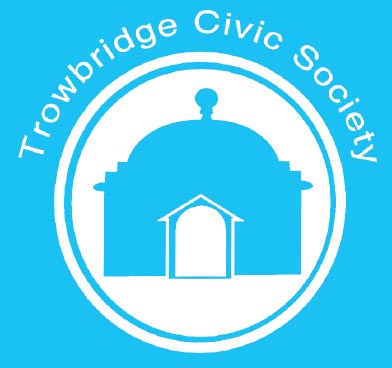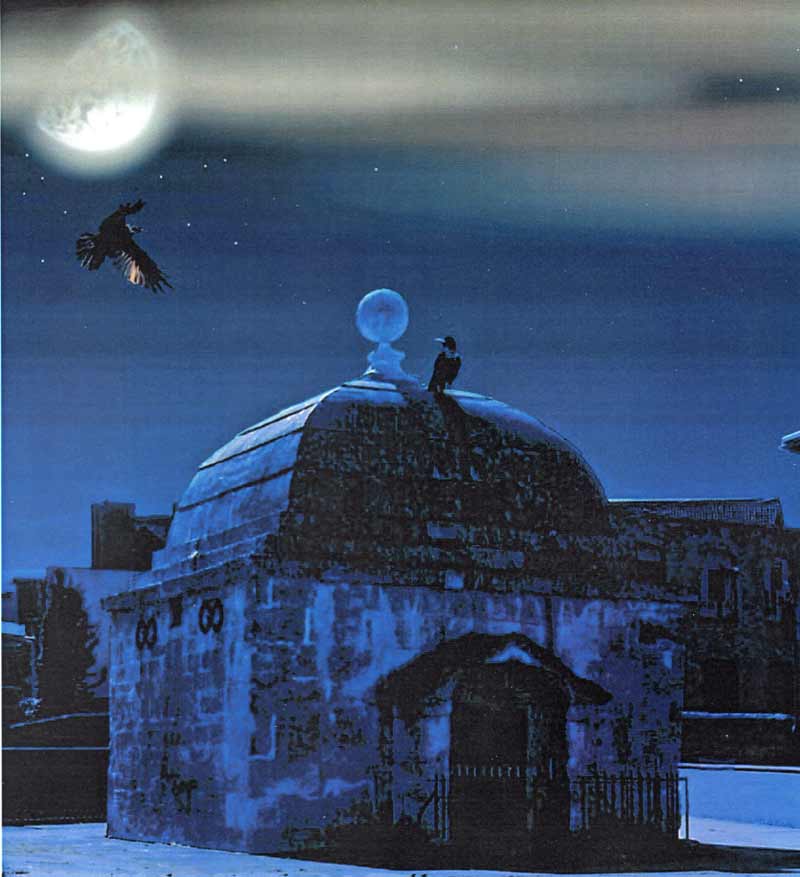| ||||||||||||||||||||||||||||
Developments in Trowbridge |
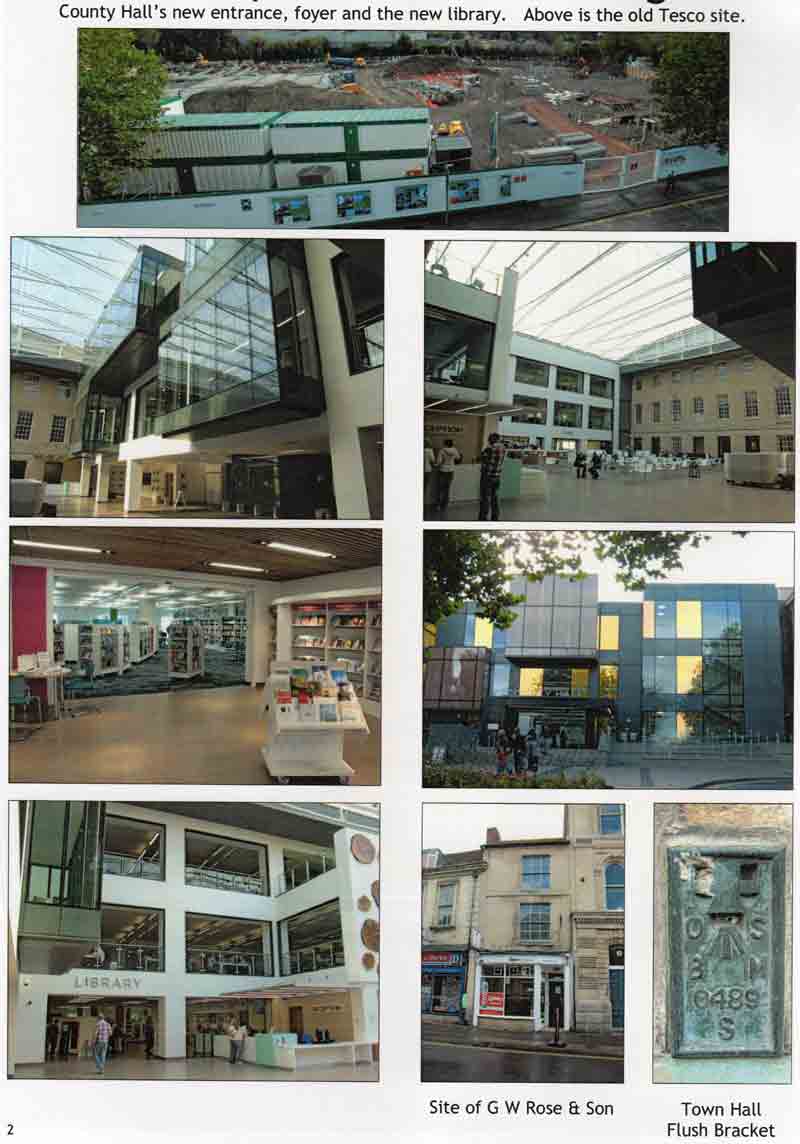 |
Contents
Click on the item to go to the article. |
Editorial CommentI hope you like our cover photograph sent in by a visitor to the Blind House - Gary Wellz. It seems to be appropriate for Hallowe‘en! Deadline for copy for the spring edition is Friday 18th January 2013. |
Forthcoming Events
| 2013 | ||
| Date and Time | Event | Venue or Meeting Point |
| Tuesday 15th January 19:30 |
New Year Social and Quiz – Please bring a plate of food (if you can) – Drink provided. Subs for 2013 may be paid this evening. |
Assembly Room, United Church, Church Street, Trowbridge. |
| Tuesday 19th March 19:15 |
Annual General Meeting and Talk (Speaker to be announced | Haden Room, United Church, Church Street, Trowbridge. |
To arrange for a lift or to volunteer to car share please contact Glyn on 755784
| Corporate members: | Coleman & Starkey Family Dental Practice, Timbrell Street. The Trowbridge Museum. |
FROM THE CHAIRMAN |
In his book The Buildings of England, Wiltshire, Nikolaus Pevsner says of some of the monuments in St James's Church, “Many tablets, ruthlessly skied.” This could be said of the latest addition to the band stand in the People's Park. [Presented to the town by William Nelson Haden in 1939 Ed.) Many of you may by now have seen the very good Olympic mosaics that have been produced by each of the local schools. They are indeed very attractive and have been greeted with great enthusiasm by many who have seen them. I do have a problem with this though. I don't think that the band stand, the only art deco building in the town of any merit, is the right place to put this work. The band stand certainly needed some refurbishment. A good start would have been to replace the flagpoles and banners that were removed a few years ago. A set of railings around the missing flower beds at the front would keep out the drinkers and graffiti nuisances.
While we may enjoy the bright colours of the mosaics, very good eyesight is needed to see the details in the work. No consideration has been given as to how this work should be completed. They look very much like an afterthought. It would have been better if the background colour continued from the ends of the mosaic to complete the arc and the same should have been done with the inscription.
It seems that no consideration has been given to the visually impaired, many of whom like to be able to touch an object to fully appreciate it. While the intentions were admirable, I feel that we have done these young artists a disservice in not finding a more appropriate place to display their work.
Planning Matters |
In order to involve members more actively in scrutinising planning proposals, information on relevant applications is now posted on the Civic Society website. Members who are interested are invited to consult the list, and to respond in a personal capacity if it is appropriate. If any member wishes to make a comment to be taken into consideration when the Society formulates its response to an application, please email Kevin Eames at kevineames@blueyonder.co.uk.
The main planning decisions taken since the last Newsletter were as follows. Consent was given on May 9th for the installation of solar panels at 32 The Halve. Concern had been expressed that they were to be at the front of the property but a parapet will hide them from view. Permission has also been granted for dwellings on a former garage site and spare land in Bond Street. Two parking spaces will be created within a courtyard, so the project will not exacerbate existing parking problems. A retrospective application was given consent to construct a first floor window in the Methodist Church at Staverton, and to replace a staircase, move two tie bars and put in a toilet area. No changes would be made to any historical features within.
Listed building consent has been given for the demolition of an existing orangery and the construction of a single storey extension at The Lodge in Victoria Road. Consent has also been given for a replacement fascia sign at Scope in Fore Street. Work has already begun to construct 79 dwellings on the former Usher's Brewery bottling plant, for which planning permission was granted on August 24th, and which the Society supported strongly. The installation of skate-park lighting and a “street snooker” facility in the Stallards Recreation Ground were given consent on August 18th. On September 11th The Rose and Crown, Stallard Street, was given listed building consent to convert upper floors to letting bedrooms, to put in a metal fire escape and to remove an existing wall and gate to the courtyard. At Ingleby Lodge, 4 Clarendon Road, Trowbridge, the proposed demolition of a utility room and conservatory, replacing them with a two storey extension, has been given permission. The owners are careful of this late Victorian house, and have made many appropriate improvements. The extension is contemporary in style, and there was some feeling that it might overwhelm the original building because of its scale. It is visible from rear, but does not affect the street scene.
As of September 30th no decision has been made available on the proposal to construct three dwellings in the grounds of South Rodwell Hall, although the Council had hoped to reach a decision by September 9th. The Society has already objected to an earlier version of this, which was turned down. The proposals for alterations to the Hall, and the three dwellings still don't look appropriate for their context and would constitute over-development, as well as serious alterations to a listed building. A proposal to change an empty retail unit in Castle Place to be used by a payday loans company is still pending consideration. The shopfront display would certainly need careful consideration. Following submission of the Core Strategy to the Secretary of State, the Inspector has requested that the Council undertake further focused consultation. Comments can be made from 20/09/12 to 1/11/12. There is also to be a public inquiry (date to be announced) to decide the appeal lodged by Optimisation Development Ltd against the refusal of plans for the former Bowyer's Site. Information can be found on the Planning Inspectorate's web site.
The Business of G W Rose & Son |
John William Tranter was in business at 14 Church Street as a bookseller between 1878 and 1883 when he was joined by George William Rose. Tranter a Rose was the name of the short-lived partnership which lasted until 1886 when Tranter left and George Rose continued on his own as a stationer and optician. The premises were also used between 1884 and late 1889 by G Fletcher Moore for his ships’ passages business. He had come from 39 Church Street and moved to 12 Castle Street, after which George Rose added ships' passages to his activities. When George Rose moved next door to 15 Church Street in late 1893, he ceased the ships' passages and optician activities, but continued as a stationer. In 1889 he was agent for Foster & Co, parcel delivery. The book “Twenty Golden Candlesticks” was published jointly in 1890 by B Lansdown & Sons and George Rose, booksellers, Trowbridge, and Simpkin Marshall, Hamilton, Kent Ltd, London, and is the history of Baptist Nonconformity in Western Wiltshire, written by Rev William Doel, pastor of Southwick Baptist Church. After only one year at 15 Church Street, George moved in 1894 to 66 Fore Street, where he took into partnership his son, Charles W Rose, and the stationery business name changed to G W Rose & Son. It was whilst at 66 Fore Street that on 2nd September 1898, George took over the stationery business of William Collins at 51 Fore Street, which also made him agent for the West Wilts Printing Co Ltd as well as a bookbinder. The branch shop closed October 1909, leaving George and Charles to continue at 66 Fore Street. George, for many years, lived at “Egerton”, Westbourne Road, and by 1923 was at 10 Westbourne Gardens. He was a founder member of the Trowbridge Chamber of Commerce 1901, Treasurer 1904 and was President in 1907.
In March 1919 they moved across the road to 6 and 7 Fore Street, where sports equipment and newspapers were added to the products sold. They disposed of 7 Fore Street in April 1929 and concentrated on the deep thin shop at 6 Fore Street which, at one stage, was a proposed entrance to the Shires. George died 31st October 1935, leaving Charles to continue the business until, in 1948, it passed into the ownership of Richard Julian Rose, a third generation Rose who had served in the RAF. He introduced fishing tackle and Ordnance Survey maps to the stationery range and the shop became an Aladdin's cave where a wide variety of stationery products could be found in large drawers in the depth of the shop. Richard, who Lived at 38 Silver Street Lane, retired in October 1986 and died 28th December 2003.
Trowbridge Town Hall Flush Bracket SO489 |
As you walk from Trowbridge Park to the town centre, wondering about the future of the Town Hall, you may have noticed a small but historically significant piece of street architecture. This small metal plate, set into the wall quite low down, is an Ordnance Survey Flush Bracket, and is a vital link in the set of points established by the Ordnance Survey in mapping the country, providing a reliable location at which a levelling rod can be positioned. Town halls, churches, railway bridges, expected to stand for a long time, are often used. Not all have survived.
Other, more common, links in the chain are cut bench marks (a horizontal line above an arrow) chiseled into vertical surfaces. More exciting, but more difficult to find, is a Fundamental Bench Mark. These are 20 or 30 kilometres apart and link up the whole system. Our nearest, at Upton Lovell, is on private farmland, but you can see one, enclosed by railings, in the park at Dorchester. Don't expect something huge - the enormous, immovable granite block, resistant to ploughing or other upheaval, is almost entirely underground. All that is visible is a metal cap and inscription.
Satellite surveying has superseded the old system, but because, for obvious reasons, the Ordnance Survey kept excellent records, this still important part of our history is easily accessible. Interested? Then, while near the Town Hall, why not jump on the next 264/265 Warminster bus to All Saints Church, Westbury, where Flush Bracket SO477 is a fine example (on the north face, near a drain pipe).
The Haden Family |
A millwright's task in the woollen industry was to assemble and look after the machinery used in spinning, scribbling and carding etc. Originally the gears of these machines were made of wood, but by the time textile machines were being installed in Wiltshire they were being made of metal, and steam engines were taking over from water power. In Trowbridge in the nineteenth century the firm of G & J Haden came to dominate the trade.
This Haden family history begins with George Haden senior who worked at the Birmingham Soho Manufactory of Boulton and Watt at the end of the 18th century. He had three sons who were articled or apprenticed to the firm.
George Haden (1788 - 1856) was apprenticed at the age of 15 for a period of 5 years as an engineer, working on the erection of steam engines. From around the age of 22 years (1809), he was sent out on the road as a travelling agent/engineer by the firm assembling, erecting and commissioning steam engines manufactured by the firm at the Soho works.
In 1814 Messrs Boulton and Watt sent George southwards to superintend the erection of their steam engines. The woollen firm of J & T Clark had decided they needed to have a steam engine to replace their horse-driven machinery to power their Trowbridge Mill, so this became the first engine George had to erect. It is not certain how many others he worked 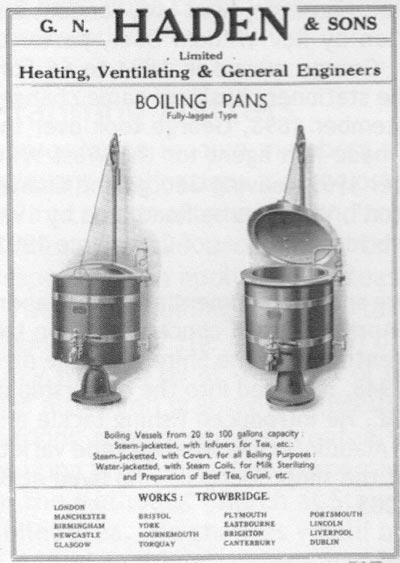 on in Wiltshire. He was soon joined in Trowbridge by his wife, Ann Nelson, and later by his brother James Haden, and set up home in Trowbridge. Their work thrived during the period 1815 to 1820.
on in Wiltshire. He was soon joined in Trowbridge by his wife, Ann Nelson, and later by his brother James Haden, and set up home in Trowbridge. Their work thrived during the period 1815 to 1820.
In 1817 Ann and George had their first child, whom they named George Nelson Haden. Tragedy struck George in August 1819 when his beloved wife Ann died. Young George Nelson was only two years old when his mother died and he was then looked after and cared for by George's two older sisters, Mary and Sarah.
Little is known about why and how the two brothers came to working priorities changed towards the heating & ventilating interested in the erection of warm air stoves and when their side of their business. However, we know that George and James started their firm of G & J Haden in 1816 and warm air stoves manufactured in their Trowbridge works commence from around 1819 as shown in the firm's order books. Every stove made by G & J Haden was given a unique number and the first order book lists stove No 1 to a Mr Bythesea of Trowbridge. Stoves Nos 2 - 6 were erected for the Earl of Pembroke at Wilton House.
Times were good for George and James as the order books show that between 1820 and 1855 around 1500 warm air stoves were made and erected. The census of 1851 records the firm employing 83 men at St George's Works in Silver Street Trowbridge. Later, after George's death, they were using a foundry situated near the railway station in Stallard Street. George and James carried out the erection of a large number of warm air stove installations in mansions, churches, banks, colleges and public buildings under the name of G & J Haden.
James Haden (1790 - 1871), being a bachelor, he was able to be the partner in the firm who travelled the country erecting, supervising and taking orders for the installation of warm air heating a ventilating stoves and expanding the firm's business. His travels took him the length and breadth of the British Isles. James Haden remained a bachelor, and apart from his business travelling for the firm, lived the majority of his adult life in Trowbridge. He decided to retire in 1855 at the age of 65 staying in Trowbridge for his retirement. The census of 1861 and 1871 shows him living at Homefield, Polebarn Road. James died in 1871 at 81 years of age.
George Nelson Haden (1817 - 1892), who liked to be known as Nelson Haden, was the only surviving child of George and Ann Haden (nee Nelson). Born in Trowbridge on 8th March 1817, he was baptised at the Tabernacle Church in Church Street on 25th April in the same year.
He was apprenticed for 5 years to G & J Haden when he was 14 years old, and after two decades with the firm he was ready at the age of 39 to take over control of the firm after his father's death in 1856. Following his uncle's retirement in 1855 the name of the firm changed to George Haden & Son.
On the 30th September in 1841 he married Mary Poynton in the Tabernacle Congregational Church. This was the first marriage ceremony to be performed in the church after the new marriage act of 1837 was passed by Parliament.
Nelson and Mary had 8 children who were born between 1842 and 1852, but tragically only two children survived into adulthood, including Joseph Poynton Haden. Mary died on the 22nd April in 1853 at the young age of 43 years.
Later he met Emma Louisa Batley and married for the second time in Bristol during the summer of 1856. They had 5 children who were born between 1857 and 1863.
The firm expanded and flourished under Nelson Haden's control, with branch offices opening in London, Manchester and Birmingham. In 1874 Haden's opened their own iron foundry, named St Georges Foundry, sited in Bythesea Road. Nelson Haden went into partnership with John Woodfin the husband of Sarah Woodfin. Sarah was Nelson's aunt who had brought up the young Nelson from the age of 2 years after his own mother died in 1819.
On the 3rd January 1892 he died of influenza, aged 73 years, in Trowbridge. His wife Emma survived him and lived until 1901, when she died at the age of 73.
William Nelson Haden (1859 - 1946) was born on March 10th 1859 at Homefield House, Trowbridge. He was the 7th son of George Nelson Haden but the second son of his second marriage. His education started at home where he was taught at an early age by his step-sister Marianne (who was a teacher at the local school). In 1868 he became a weekly boarder at a preparatory school in Devizes until 1871, then progressed on to Grosvenor Road School in Bath. He 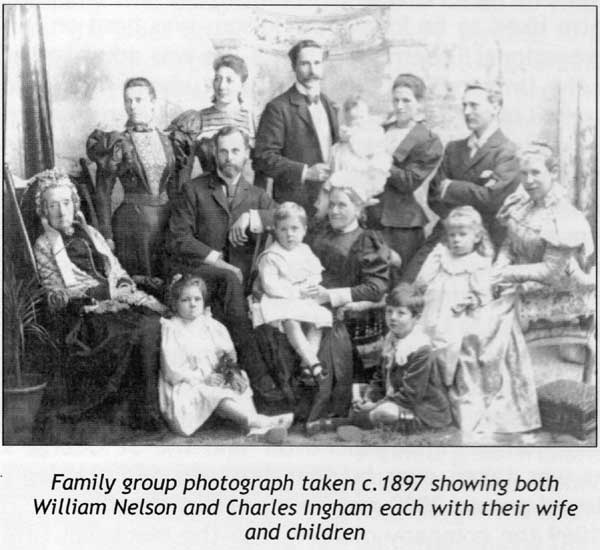 completed his education at Oakley House Caversham near Reading, leaving in 1875. William was a keen athlete at this school,winning the l00yards, as well as coming second in the 200 yards and ¼ mile.
completed his education at Oakley House Caversham near Reading, leaving in 1875. William was a keen athlete at this school,winning the l00yards, as well as coming second in the 200 yards and ¼ mile.
After leaving school in 1875, William commenced his apprenticeship with the firm on 1st October for a period of 5 years and started work in the Pattern Shop. Although trained in the firm's works, he then worked on the design of steam engines and machinery for the cloth mills. After the death of their father in 1892, the three sons Joseph Poynton, William Nelson and Charles lngham entered into a partnership on 10th August 1893. The partnership was to be effective from 31st March 1892 for 7 years. A further partnership of the firm was made with his brother Charles in 1912, to take effect from 31st March for 10 years.
William married Jeanie Denholm in 1897. They had four children between 1898 and 1905. William greatly increased the firm's involvement with the heating of buildings by both air and water. Under his direction the firm expanded its activities until it achieved a leading position in the industry during the early 1900's in the areas of heating, ventilating and air conditioning. After 1910 they gave up some of their other activities such as gas engineering and general millwrighting. He became Chairman and Joint Managing Director of the company in 1919 and held the posts until his retirement in June 1933.
William was an active member of the Institution of Heating and Ventilating Engineers, becoming president in 1906 and honorary treasurer in 1909. He held this post for 34 years until retiring in 1943. He was keenly interested in education and training at both national and local levels, and a William Nelson Haden fund was created by the Institution to provide scholarships to students training in the heating and ventilation industry.
William was also an active member of the local community and involved with many public duties for the County and Town serving on their committees as Justice of the Peace for Wiltshire County Council in 1898, member of Trowbridge Urban District Council 1899, Member of the Education Committee 1917, Chairman of the Wiltshire Probation Committee 1922, Chairman of Governors Trowbridge Secondary Schools 1927, Councillor for Trowbridge North 1928.
William made a gift and presentation in 1939 of a new bandstand in the main park and gardens of his home town of Trowbridge dedicated to the memory of his father and grandfather.
Charles Ingham Haden (1863 - 1947) was born on 2nd June 1863 in Trowbridge and baptised in the Congregational Tabernacle Church. He joined the family firm as an apprentice for 5 years from 1880 to 1884 then served as a draughtsman until becoming a partner in the firm in 1892, when he was placed in charge of contracts. Under his direction many new prestigious contracts were installed, including the University of Leeds, St. Bartholomew’s Hospital, St Paul's Cathedral and Cheltenham Town Hall. After the death of his second wife Rosa in July 1937, he had the Tabernacle Cottages completely reconstructed as a memorial to her. An inscribed wall stone was placed in the external wall to acknowledge these works.
When the firm was incorporated in 1919, he became joint Managing Director of the firm and took charge of the contracting branch of the company. He became Chairman of the company in 1933 upon the retirement of his brother, a post he then held until his own retirement in 1938. He became president of the Institution of Heating and Ventilating Engineers in February 1910.
Charles was also an active member of the local community and involved with several public duties for the County and Town serving on their committees as, Chairman of the County Education Committee, Chairman of the Managers of the Local Council Schools, Justice of the Peace for Wiltshire County Council, President of the Trowbridge and District Hospital.
He died at his home Red Gables Trowbridge on 24th May 1947.
George Nelson Haden (1900 - 1960), who also liked to be known as Nelson, was born on 9th March in Trowbridge and baptised in the Congregational Tabernacle Church. He was educated at Mill Hill School and, after leaving, attended the University of Manchester, studying for a BSc Degree in Engineering. After graduation he worked in the United States for a time. Returning to Britain in 1923 he joined the family firm. He married Phyllis Jean Mudie, whom he had met at university in 1924. They had four daughters born between 1924 and 1934.
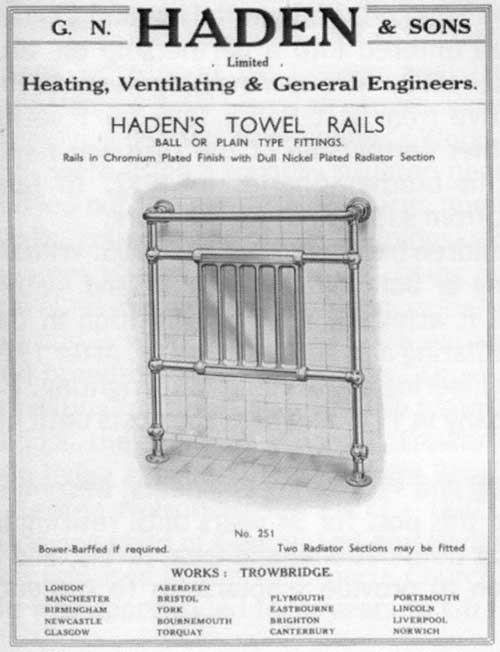 Nelson was an active member of the Institution of Heating and Ventilating Engineers and also became President in February 1938. As the firm activities were increasingly being centred upon the new head office in London, Wiliam Nelson moved with his family to London in 1929. He was awarded the OBE in 1948 for services to industry. He retired from the Chairmanship of the firm and left the company in 1958 due to ill health. He died in London on 30th July 1960.
Nelson was an active member of the Institution of Heating and Ventilating Engineers and also became President in February 1938. As the firm activities were increasingly being centred upon the new head office in London, Wiliam Nelson moved with his family to London in 1929. He was awarded the OBE in 1948 for services to industry. He retired from the Chairmanship of the firm and left the company in 1958 due to ill health. He died in London on 30th July 1960.
In 1969 the company merged with the electrical firm of Troughton & Young to become Haden Young. On 1st July 2009, Balfour Kilpatrick and Haden Young merged to become Balfour Beatty Engineering Services. The company is now one of the UK's largest providers of specialist mechanical and electrical services.
Acknowledgements: This article has been adapted from the Heritage Group website for the Chartered Institution of Building Services Engineers. Permission was given by J Ferris CIBSE. Their excellent site is at http://www.hevac-heritage.org/
RECENT MEETING: |
Newtown Walk |
On May 13th Peter Collier led a group of about a dozen Civic Society members around Newtown. He based his commentary on the Newtown Trait written by Michael Lansdown in 1991. Almost as soon as Peter started to speak, the first raindrops could be felt and very soon hoods and umbrellas were being raised. Our pace quickened as the rain became more serious but we stood for a white to admire the carved wheat sheaf on the old Co-op building, designed by Walter Snailum, and to hope that future redevelopment of the building might reveal the other carvings, at present concealed by the motor spares shop front. As the downpour continued we paused to consider the folly of demolishing numbers 1-12, some of the earliest houses on Newtown, built in the 1790s, to have them currently replaced by advertising hoardings. Further along we saw Pilewell Terrace with its long front gardens which recalls Newtown's original name, Pilewell. It came as quite a shock to look across the road from Park Street School to see the name Park Farm still visible on a gate pillar and then try to imagine a sizable farm on that site, now beside a busy main road.
We turned into Frome Road and looked at the Hope and Anchor, and considered what it would have been like to go to Mass in a pub, as the Irish soldiers billeted in the Artillery Barracks opposite would have done until the Catholic Church on Wingfield Road was built in 1875 by A. J. Scholes. From Frome Road, we turned into Bond Street and then into Park Street. At right angles to Bond Street was a narrow unadopted road called Surrey Place, and it felt rather strange to be walking along beside the properties' outhouses and back yards, rather than front doors and porches. At the other end Surrey Place led onto Waterworks Road, or more accurately No-waterworks, as the company who established the works failed to find any water. Appropriately enough, the water from the skies dried up and we were treated to a magnificent rainbow which made our damp clothes and dripping umbrellas much more bearable.
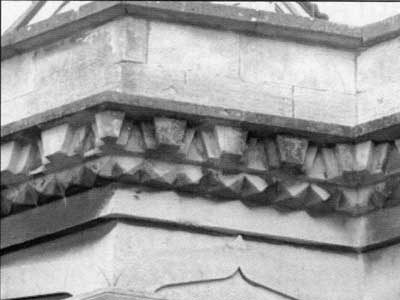 We entered Gloucester Road and after looking at Rosebank, the rural music school, and admiring its small side windows and unusual cornicing, crossed to Avenue Road. Of the three roads off Wingfield Road, this was top in the social hierarchy and, according to the 1891 census housed teachers, ministers and mill owners as welt as people with more humdrum occupations. One of the committee members suggested that the pavements in this road used to be two and a half feet wider than at present. This was offered as a reason for the trees being on the road rather than the pavement but Peter wasn't happy with that explanation as he had seen a photo from about 1910 showing the trees already growing in the carriageway. (Can anybody throw any light on this debate?) The houses in Avenue Road were architecturally varied and had interesting
We entered Gloucester Road and after looking at Rosebank, the rural music school, and admiring its small side windows and unusual cornicing, crossed to Avenue Road. Of the three roads off Wingfield Road, this was top in the social hierarchy and, according to the 1891 census housed teachers, ministers and mill owners as welt as people with more humdrum occupations. One of the committee members suggested that the pavements in this road used to be two and a half feet wider than at present. This was offered as a reason for the trees being on the road rather than the pavement but Peter wasn't happy with that explanation as he had seen a photo from about 1910 showing the trees already growing in the carriageway. (Can anybody throw any light on this debate?) The houses in Avenue Road were architecturally varied and had interesting 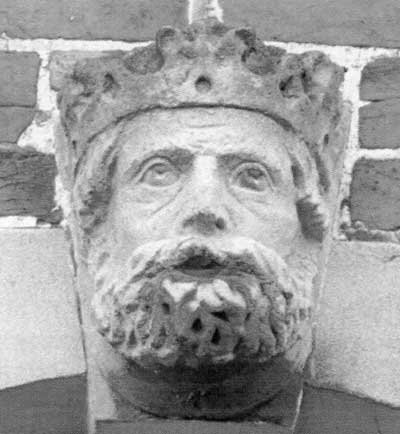 features like stained glass windows and carved pilasters. We admired the first four large mansions to be built (by E. Linzey) with wooden balconies facing the street, and heard from Margaret Howard that they used to have back stairs for the servants but that these have since been taken out. Linzey and Snailum also built the large detached houses on Wingfield Road to which we looked across from Avenue Road.
features like stained glass windows and carved pilasters. We admired the first four large mansions to be built (by E. Linzey) with wooden balconies facing the street, and heard from Margaret Howard that they used to have back stairs for the servants but that these have since been taken out. Linzey and Snailum also built the large detached houses on Wingfield Road to which we looked across from Avenue Road.
Peter pointed out a Victorian terrace in Gloucester Road and we appreciated the lovely porches, with carved heads above the doors and interesting bricks with flowery patterns on them. In Alexandra Villas some of the houses had unusual turrets at the side and classical pediments were also to be seen. A builder named George Fluke built many of the early houses around the corner in Westbourne Road and decorated them lavishly with foliage carvings.
The group very much enjoyed Peter's interesting tour around Newtown and thought it was a pity that this fascinating part of Trowbridge is not more widely appreciated.
BOOK REVIEW: |
Trowbridge Then and Now in Colour
Michael Marshman and Ken Rogers
 A new book by these two authors is to be welcomed and this one is particularly appealing as history seems to come alive as we “compare and contrast” old and present photographs of Trowbridge - see opposite. Over 40 locations have been chosen, mainly around the centre of town, but they also include the Frome Road barracks, Newtown, Gloucester Road and Mortimer Street, one of my favourites. The sepia prints are particularly interesting to look at, conjuring up a time when traffic was almost non-existent, people could walk safely in the streets and gaze at the photographer and when every man and boy - wore a hat. The view of a drift (?) of pigs in the station yard on their way to Bowyers is also very evocative of times past.
A new book by these two authors is to be welcomed and this one is particularly appealing as history seems to come alive as we “compare and contrast” old and present photographs of Trowbridge - see opposite. Over 40 locations have been chosen, mainly around the centre of town, but they also include the Frome Road barracks, Newtown, Gloucester Road and Mortimer Street, one of my favourites. The sepia prints are particularly interesting to look at, conjuring up a time when traffic was almost non-existent, people could walk safely in the streets and gaze at the photographer and when every man and boy - wore a hat. The view of a drift (?) of pigs in the station yard on their way to Bowyers is also very evocative of times past.
The present day pictures, although in full colour, seem dull in comparison, partly because of the bleak modern architecture and also possibly because of a lack of people in many of them. But they will make the reader, especially one who is a member of the the Civic Society, consider whether our modern day planners really care about the appearance of modern Trowbridge.
Next to the photographs are informative comments about how and why the scenes have changed. There is a great amount of history here and plenty of wonderful details to ponder over and explore. It is a truly delightful book.
The book is available from Trowbridge Information Centre, Trowbridge Museum, Knees and all good bookshops.
SOCIETY OUTING: |
Arnos Vale Cemetery, Bristol Waterfront and Blaise Castle |
For me this was a trip which brought many childhood memories back. I used to live a few hundred yards from the Arnos Vale Cemetery and used to pass one of its entrances every day on the way to junior school. But I had never been more than a few yards inside the gates. But, as the guide book states, Arnos Vale is a hidden treasure, a secret garden behind Victorian gateways.
Our knowledgeable guide gave us a short history of the cemetery, its rise and fall and its rebirth after a concerted effort by local people to preserve it from modern development. Now its future seems assured as a cemetery, a wildlife haven and a “green lung” in the heart of Bristol.
The architecture of the original buildings is notable for its Greek neo-classical style. They are gradually being restored to their former grandeur and the gate lodges make an imposing entrance to the site. We were also shown a selection of graves and monuments, of local dignitaries, showmen, social reformers, successful business people, though for financial reasons the poor were not so well represented! It is certainly a good place to wander round at leisure and many Bristolians were doing just that with children, bicycles and dogs.
By now any threat of rain had disappeared and we spent some time on the busy Bristol waterfront where we lunched.
Blaise Castle, which was out last port of call, also figures strongly in my memories. It is an 18th century mansion house to the west of Bristol and was described as “the finest place in England” in Northanger Abbey. It is now a branch of Bristol City Museum and Art Gallery containing paintings and a collection of household objects. The surrounding park is a public park with a sham castle, which some members were energetic enough to climb up to. Nearby is Blaise Hamlet, now looked after by the National Trust, a delightful collection of cottages built for servants and tenants of the mansion house.
Many thanks to our secretary, Celia Russell, for organising such an interesting and enjoyable outing.
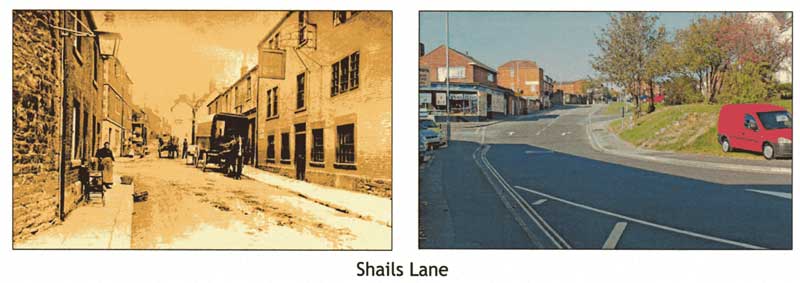 |
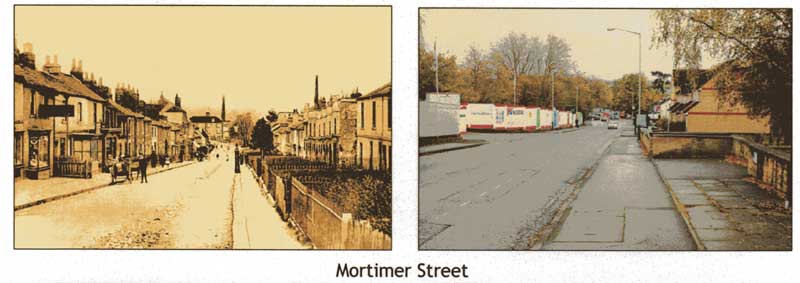 |
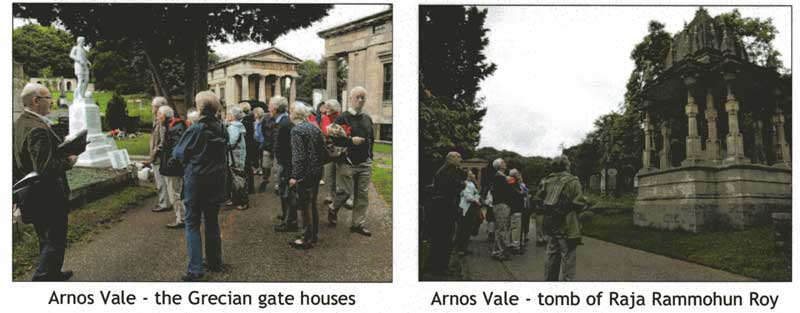 |
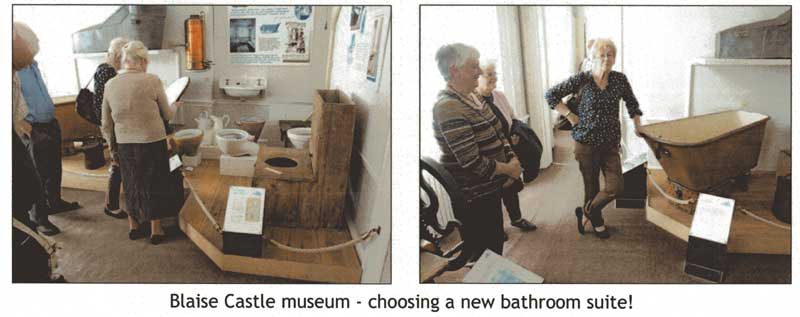 |
Enhancement or Eysesore? |
Here are some of the changes that have blessed or blighted Trowbridge in recent years.
How do you rate them? Email me (mike-johnson@blueyonder.co.uk) with your view by putting them in order - dislike most first, e.g. if you dislike the County Hall extension most, then the old bus station, your list would start 3, 7, etc.
Please email me by 31st December and i'll announce the results (with divulging your identity) at the January meeting.
 |
 |
 |
 |
